Posted by Steve Durbin on March 2nd, 2009
I guess it’s natural for a photographer working in black and white to notice where things fall on the continuum between the two. Though all shades of gray are lovable, it’s more the extremes that seem to win my heart. It’s the attraction of pure yin and yang. It’s therefore a special delight when winter brings a reversal of this duality in one of my favorite subjects, namely streams and their ilk. Once there’s snow on the ground and ice forming on the bank, the water itself turns dark, just the opposite of the typical summer pattern of white water amid dark rocks or ground. Since a trip a couple months back along a local stream after the first big snowfall, I’ve been contemplating a series I tentatively called Black water. The early images didn’t seem especially promising, but I never found time to take a good crack at it.
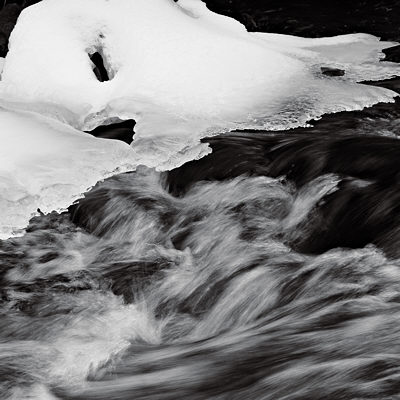 1
1
more… »
Posted by Birgit Zipser on February 27th, 2009
Went to NYC for the weekend.
more… »
Posted by Karl Zipser on February 24th, 2009
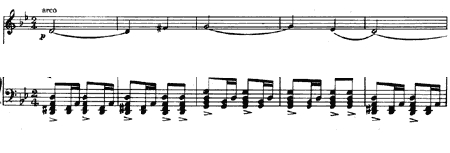
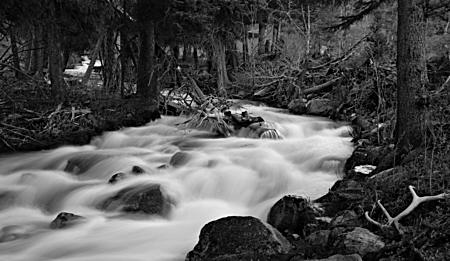
I’ve always liked this photo by Steve Durbin.
But what does it have to do with tango?
Let’s look more closely. The landscape has sharp and repetitive features. This regularity creates a structure through visual rhythm. The water is something quite different. It is a smooth flow, it is bold and bright, yet soft. Both the land and the water have motion. You might say, the water is moving and the land is still, but that is not correct. more… »
Posted by June Underwood on January 23rd, 2009
I have just joined Facebook (thanks, D.) and of course, instantly found a group dedicated to a textile artist’s focus: namely, texture.
The photos of “texture” on the group site were close-ups, both of quilted fabric and of objects that showed as textured. I started through my photos and quickly realized that deciding on what shows texture is not as easy as might be imagined. Here are some possibilities from my files.
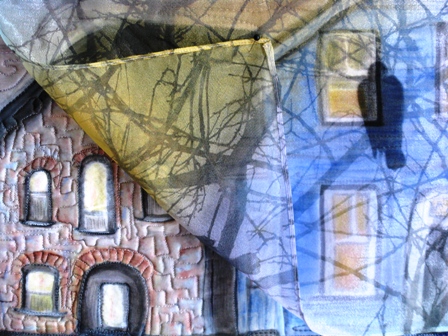
The High Note, JOU, Computer images on Silk, quilted, 12 x 12″, 2008.
The upper layer (of computer-printed sheer fabric) is turned back to show under layer. Normally the sheer would fall over the entire piece, showing through as it does on the right bottom. This dropping of the sheer obscures much of the texture while at the same time, contradictorily, adds to it.

Vilhelm Hammershoi, Sunbeam (and various other titles), 1900, oil on canvas.
more… »
Posted by Steve Durbin on January 4th, 2009
I’ve been photographing horses for well over a year now, and I’m feeling it’s time to put together a show, or at least a portfolio. I would be happy just continuing to make photographs indefinitely, but I’d be happier grappling with the work in another way as well, reviewing it and thinking about it and looking for themes or ideas. A few thoughts have been mentioned in previous posts, but none has risen to the level of forming the backbone of a potential statement. Perhaps the most striking thing to emerge from my photographs is a lack of interest in anything resembling a classic, noble, iconic western horse. In fact, I notice that none of the images selected for this post even depicts an entire animal (though I have some that do).
One thing I realized in the course of the recent Morandi discussions is that the edges of the bodies are often blurred, or more generally obscured, either through intervening snow or grass…
more… »
Posted by Steve Durbin on December 2nd, 2008
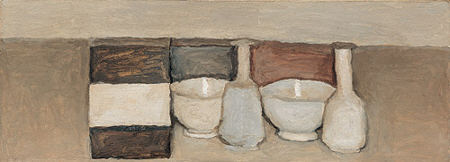
It’s been instructive to continue experimenting with photography à la Morandi: not attempting to imitate, but rather to explore some of the themes he seems to be working with, or at least what I find myself working with as I go about it. One thing I realized looking at more of his pictures, both online at the Metropolitan and the Morandi Museum, and also in a book found at the library, is that he was often interested in the modeling of masses by the light falling on him. This was contrary to my impression from the quite flat images that seem to be more common. Perhaps working in both modes was his own form of experimentation.
more… »
Posted by Steve Durbin on November 28th, 2008

Birgit’s post and subsequent discussion on Giorgio Morandi has inspired me to try my hand at the same subject using photography. Not with the goal of trying to create an imitation Morandi, but more as an exploration for myself of some of the same ideas I see and enjoy in his paintings. I don’t claim these are necessarily Morandi’s ideas, but I think the process will certainly help me understand his work better. Essentially, I am taking up again the concept of studio as laboratory.
more… »
 1
1





